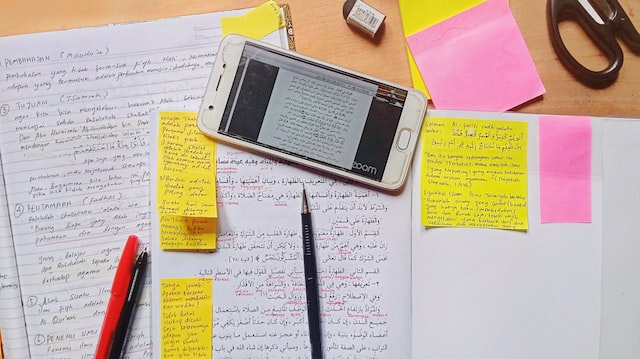Critical Summary Of Roger C. Echo-hawk’s Integrating Oral Traditions And The Archaeological Record In Deep Time
Unfortunately, some scholars still doubt the historicity or oral literature. Echo-Hawk argues that it is essential to combine both to get a thorough understanding of NAGPRA findings and to create a vivid image about ancient American history. Echo-Hawk’s piece is structured in a way that highlights the fact that an effective and inclusive study of oral histories can help one gain a deeper understanding of Native American culture, as well as provide insight into their social and geographical migration. This summary will discuss the key issues Echo-Hawk brings up, NAGPRA and its procedures as well as the overall evaluation and critique of the oral traditions.
Native American Graves and Repatriations Act was created in 1990 to protect and return cultural items to lineal descendents or culturally affiliated Indian Tribes and Native Hawaiian Organizations. Recently, oral traditions have gained more recognition as a source of historical information. Some scholars even use oral traditions for their antiquity research. NAGPRA investigations however, are based mainly on archaeological data such as artifacts or osteological evidence. The majority of scholars prefer archaeological evidence to establish tribal connections and timelines. Echo-Hawk notes that, for those scholars who have embraced orally transmitted literature, their findings were superior to the rest. This means that research into ancient history can’t be completely objective and must contain subjectivity. Oral literature is not used often, and it may be that the assessment of oral traditions could harm tribal relations. Analysis of this kind lacks a “strong discipline infrastructure” because of its infrequency. Archaeologists, unlike NAGPRA, are more cautious when attempting to make definitive connections between cultures or tribes. They also tend to be more involved in their research. Echo-Hawk encourages the inclusion oral traditions into historical investigations, but insists they shouldn’t be interpreted literally. Echo-Hawk shows how to avoid a muddled mix of subjective oral traditions and objective archaeological data.
Vansina’s hourglass pattern with three tiers, which Echo-Hawk mentions, reflects verbal literature’s inevitable transitions for preservation. There are three types of deductions from oral traditions: those that are strictly for entertainment; those that provide clear historical accounts or a mixture of the two, with specific facts wrapped in humorous fables. Echo-Hawk devised a set three tests that encompasses the idea that verbal literature must fall under Vansina’s ‘chaotic timeline’. It must not deviate from the original context, but if it does, then the story must be fictional, authenticated by archaeological data, as well as being in line with general historical timeline. Echo-Hawk claims that the tests will either confirm verbal literary works as historical or may even inspire further research if the findings do not match the tradition. It is important to remember that if the findings of verbal literature contradict those of osteological or artifactual data, they will still be considered more reliable. Scholars are therefore more inclined to use scientific data than verbal literature because they believe that it is more insightful. This is because they are swayed by the idea that oral tradition has a long history. It is believed that archaeological data can be used to portray history better because it has the ability to last for a long period of time. There is not much evidence to support this theory as it has yet to be established how long oral tradition can last against the passage of time. However, Echo-Hawk believes that the limit will be around 40,000 years due the complex social interactions within multigenerational environments. This’story-telling,’ i.e. traditions that depicted origins or migration stories of tribes, would have endured for thousands, and often been altered by those who told them.
Echo-Hawk’s Principles of Memorability outline the inevitable changes oral traditions encounter as a consequence of their malleability. This is in stark contrast to archaeological data which, as it’s purely scientific, cannot be interpreted. Stories are shaped by the narrators to make them more memorable and to increase their longevity. Specific historical references may be omitted for better recollection while other events can be dramatized for a more exciting story. It is believed that historical information embellished by non-historical elements will survive and be passed down through the generations. Oral literature can be easily manipulated, and the authenticity of historical information may be compromised. Scholars use the term “pseudo history” to describe this. Pseudohistory suggests that oral histories are less accurate than scientific findings. By recognizing the importance of oral traditions and their ability to be remembered, one can understand why they are still around.
The stories of emergence and migration can help to provide context for archaeological evidence that does not include it. The authenticity of migration and emergence stories is uncertain, as they can be altered by different perspectives. Arikara migration stories may share the same ideas but they differ in certain details. As an example, “Mother Corn”, the leader of migration is said have encountered several obstacles. In general, all the stories depict an “impassable lake, a vast forest and a deeply canyoned canyon”, although they vary in order. One story might describe the water like “a thick ice sheet and deep waters” while another may say that it is “an island on large waters”. George Bird Grinnell’s 1890 publication of an Arikara origin tale depicted the Arikara settling in a world underground, before reaching the mountains that they named “Blue Mountains”. The Los Angeles copy of an original manuscript of these literatures suggested the “Blue Mountains” was a Arikara naming for the Rocky Mountains that stretch from British Columbia, Canada to New Mexico, US. This is one of the few origin stories that mentions both the Blue and Rocky Mountains. A second argument is that the stories of emergence are a metaphor for historical events. Indigenous creations stories are often dominated by the theme of darkness. These descriptions provide context to the Pleistocene, and specifically the Last Glacial Maximum. The oral tradition can be used to provide context for the Quaternary, even though it should not always be taken literally.
The knowledge of Ancient America is enriched by oral traditions. Native Americans are extremely proud of their oral traditions, as they have passed on generations of knowledge. Indigenous people often resent being told that their oral history is ineffective for research into North America’s antiquity. After all, subjective data are often used to interpret objective data. To avoid disappointment, scholars should relay the exact findings they make and not only tell non-offensive stories.




0